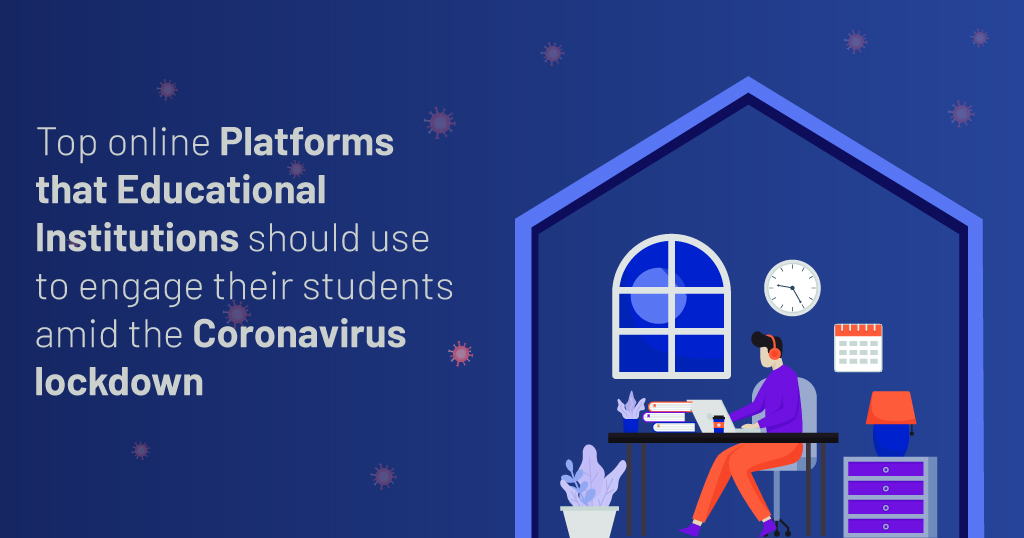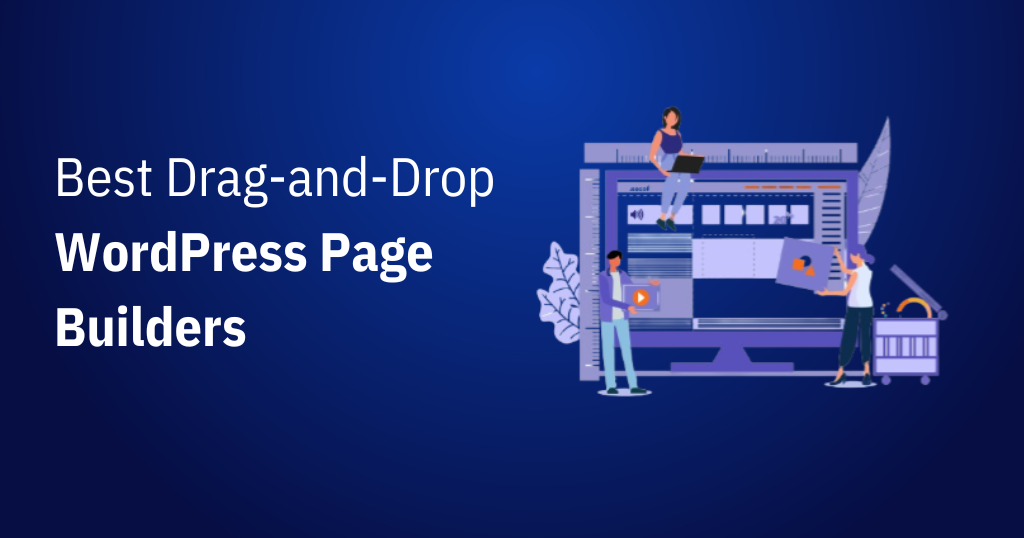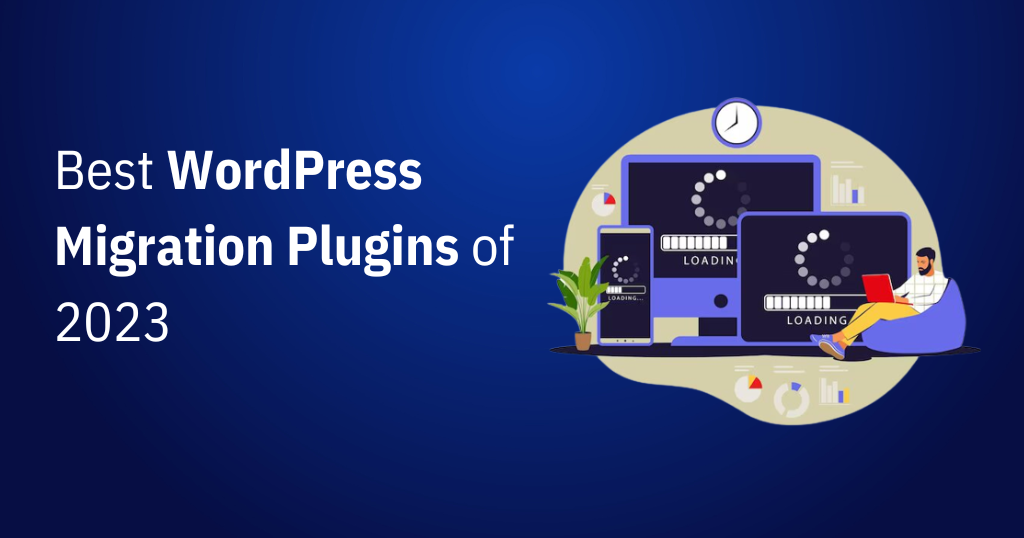Introduction
The world is hit by a pandemic caused by coronavirus due to which all the educational institutions such as Schools, Colleges, Universities, Private institutions, have to abruptly & temporarily shut down to prevent the rapid spread of the virus.
This is unprecedented where millions of students right from primary schools to colleges are forced to switch to e-learning tools to ensure their educational continuity.
Educators are now under extreme pressure to complete the remaining activities such as assignment submission, oral viva’s, practical examinations, summative exams, among others for the current academic year. They are also worried about how things are going to move forward in the next academic year when the entire existing system has collapsed.
Many educational institutions have completely stopped their teaching activities, while some institutions are carrying out activities through online tools, emails, and WhatsApp. But the remaining major part has not yet fully adopted or doesn’t use online tools at all.
The purpose of these tools is to virtually create an environment similar to their classroom so that the students can feel that they are in their classrooms from the comfort of their home.
The classroom teaching has few activities
- Attendance of students
- Teaching and Learning
- Notes sharing (Presentation / Printed materials / Dictation)
- Assessments (Objective or Subjective, Formative or Summative)
These activities are repeated for every lecture and can be easily done using different online platforms and tools.
Following is a list of online platforms that help transition to remote teaching and learning.
Google Classroom
Google Classroom is built with a purpose to manage teaching and learning online.
It helps teachers to create and organize classes, subjects, assignments. Students are enrolled in these classes, are assigned classwork in the form of assignments & quizzes, and have access to shared educational materials.
Teachers can post class announcements to all the students or only to selected students. They can track the quizzes and assignments given to students. A detailed progress report, along with the grades of the students, is available all in one place.
As expected, the Google Classroom seamlessly integrates with other Google tools such as Google Docs, Google Drive, Google Forms, among others.
It’s not a full-fledged LMS (as compared to other LMS discussed later in this post), but teachers can quickly configure it and start using it right away. Also, it can scale to any number of teachers and students, thanks to Google’s infrastructure.
One of the best features of the Google classroom is where Teachers can invite Parents to share summaries of the student’s work. This encourages the parent’s participation in the academic context as they have detailed access to the student’s progress right from the beginning.
Your Educational Institution can use the Google Classroom in the following ways
- Teachers can quickly create classes and invite their students to join them.
- A single dashboard to manage all the classes.
- Distribute teaching materials & assignments.
- Easy communication between teachers and students.
- Allows students to take assignments and quizzes.
- It allows teachers to upload educational materials where the students can view them.
Helpful links
| Official Website | https://edu.google.com/products/classroom/ |
| Teacher Center | https://teachercenter.withgoogle.com/first-day-trainings/welcome-to-classroom |
| Help Center | https://support.google.com/edu/classroom/#topic=6020277 |
| Teachers Essential Guide | https://www.commonsense.org/education/articles/teachers-essential-guide-to-google-classroom |
Moodle
Moodle is one of the most flexible tools used by educators for blended learning (mix of both classroom and online teaching and learning), e-learning, distance education, flipped classroom.
It’s a powerful learner-centric software that is highly flexible and scalable, which extends both teaching and learning beyond traditional methods, making it accessible for learners any time, anywhere.
It’s used by nonprofit, government, businesses of all shapes and sizes, among others, to meet their wide array of learning needs.
Your Educational Institution can use the Moodle in the following ways
- Engage students with both online and offline teaching and learning.
- Classes can be instructor-led, self-paced, blended, or entirely online.
- Create courses, share teaching resources to students in the form of PDF, Word, Audio, Video, among others.
- Conduct online exams using quizzes that use pre-built question templates of MCQs, Match the Columns, fill in the blanks, etc.
- Create and share assignments, collect submissions from students digitally (Online text or File submissions). Grade or give feedback on the assignments.
- Moodle has an inbuilt full-fledged file management system, which makes it easy for teachers to upload their teaching materials such as Word Files, Presentations, PDFs. Documents can even be directly imported from various cloud storage services such as OneDrive, Google Drive, Dropbox, among others.
- Teachers can track the progress of each student such as Activity completion & Course completion. All online and offline learning activities can be recorded.
- A calendar to keep track of the various academic activities such as course completion dates, assignment due dates, upcoming quizzes, among others.
Helpful links
| Official Website | https://moodle.com/ |
| Documentation | https://docs.moodle.org/38/en/Main_page |
| Teacher quick guide | https://docs.moodle.org/38/en/Teacher_quick_guide |
| Learn Moodle | https://learn.moodle.org/ |
Zoom
Zoom is a video conferencing service that allows people to meet virtually via audio and video. It is a highly scalable service with real-time messaging and screen sharing, mimicking the classroom environment, perfectly fit for teachers.
Video conferencing makes it easier to engage students than any other means.
It is a go-to option for teachers to host live classes. It has a simple, intuitive interface with lots of useful options that makes it possible to conduct live classes for even hundreds of students simultaneously.
Educational institutions use Zoom for conducting their classes, internal faculties, or administrative meetings; conduct placement drives virtually, among others.
This tool makes it possible to extend both teaching and learning beyond traditional classrooms.
Students can virtually join classes conducted by their teachers, from the comfort of their home or view recorded sessions later to learn at their own pace.
Your Educational Institution can use the Zoom in the following ways,
- Teachers can conduct their classes live or record and share them
- Internal faculties meetings or administrative meetings
- Student Viva’s
- Conduct placement drives virtually, Schedule online interviews.
Helpful links
| Official WebPage | https://zoom.us/ |
| Zoom Training Resources | https://zoom.us/docs/en-us/covid19.html |
Smriti EdTech
Smriti is an EdTech platform we built ground up by working closely with private Schools, Institutes & top NAAC rated colleges. This platform has been constantly improved upon through the feedback from various stakeholders of educational institutions such as top-level management, teaching & administration staff, students & alumni.
Although we have discussed Google classroom and Moodle in this blog, we strongly recommend a tailormade solution like Smriti EdTech, which is designed from scratch for Educational Institutions like yours.
Note that this platform is not a turn-key solution, which can be installed quickly and be used from day one. Instead, it’s a custom-tailored solution that solves specific challenges that a particular institution may have.
It is not another generic ed-tech solution that is out there in the market. We believe that every institution is unique and has its own set of challenges, and this platform is built to solve those challenges.
Currently, this platform consists of 20+ integrated modules(Click here to see a detailed list of modules), which are custom developed to solve various challenges that educational institutions face.
Your Educational Institution can use the Smriti EdTech platform in the following ways,
- Teaching and learning
Using Smriti EdTech’s LMS, Teachers can engage with their students by both online and offline education. They can create and assign courses, assignments, and quizzes, upload and share their notes, presentations, question papers & question banks, and other teaching resources.
The benefit of this is there’s one central repository of all the courses and its materials, which is used by students for learning independently at their self-pace, at their comfort, taking the time they need to absorb the information.
- Conduct Online Objective and Subjective Exams
Smriti EdTech’s Assessment Engine is used to create online exams, or assessments using pre-built question templates of MCQs, True or False, Match the Columns, Fill in the Blanks, among others. Using these templates, the teachers can quickly build a question bank, which is then used to create online tests.
Teachers can conduct formative tests periodically or conduct summative assessments at the end of the semester or year. This helps the educational institution to conduct online exams hence go paperless.
Students can even attempt tests at home using the web and mobile devices which is need of the hour.
- Track progress of students
Smriti EdTech’s platform can help teachers accurately track the learners’ progress.
Tracking such as,
- The amount of content that has been consumed by the individual student.
- The number of attempted or completed quizzes.
- Detailed tracking of the given assignments.
- Analytics of the Videos (recorded lessons) such as no. of views, the percentage of video viewed.
- Detailed tracking of the given tasks.
The process for tracking the progress of students’ may vary from institution to institution and can be customized according to their needs.
From every aspect, the students’ progress can be reviewed and based on that feedback is given to the students.
The analytics of students’ progress helps teachers identify students who are slow in their work, who are weak in certain areas, thus helping teachers to focus on solving the challenges at an individual student level.
- Master Calendar
A Master calendar is available, which is visible on the teacher’s and student’s dashboard consisting of the Academic Calendar, Master Time Table & Teaching Plan.
Teachers can enter all the information comprising all the details regarding their curricular planning and implementation. This can be planned course wise, semester wise, or for the entire year.
This calendar can be navigated by year, month, week, thus giving all the stakeholders a birds-eye view of the important events of their concern.
Helpful links
| Official WebPage | https://wpoets.com/continuous-improvement-program/smriti-edtech-platform/ |
| More Details | https://wpoets.com/edtech/make-educational-institutions-smarter-using-smriti-edtech-platform/ |
Conclusion
All the above mentioned online platforms have different features and are designed for various purposes. Teachers should use them for remote teaching & learning, thus keeping the students occupied.
Such use of technology, especially in these unprecedented times, has shifted the entire focus from teachers to students hence it has truly become a learner-centered education.
The lockdown has forced the entire education sector to switch to online platforms for their operations.
There is no better time than now for all the educational institutions to go online as much as possible.
I am signing off for now. See you soon.
Till then, stay home and stay safe.



